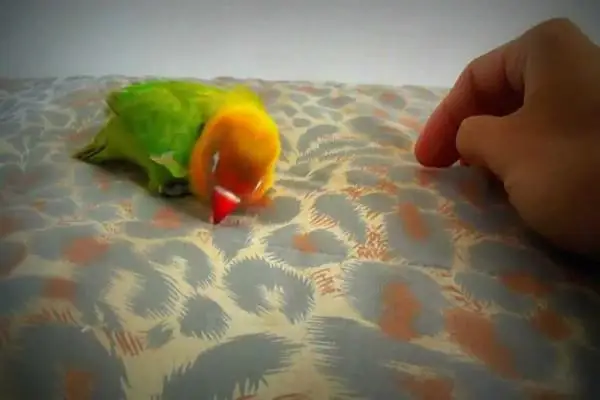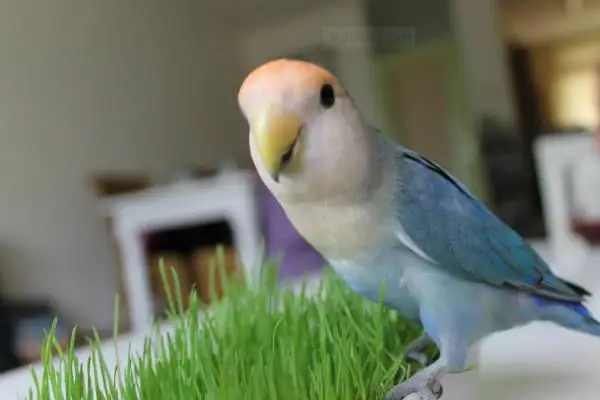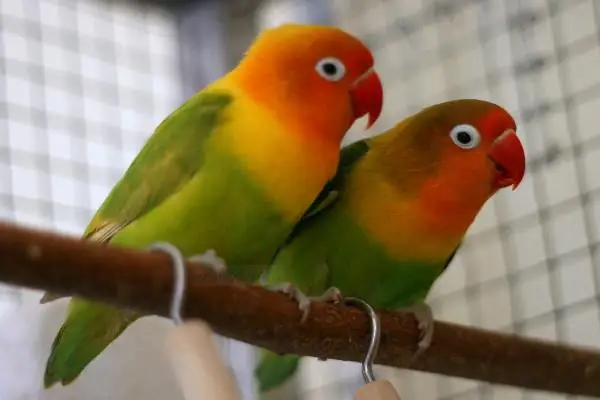Variety Overview
English Name: Agapornis megacephalum
Also Known As: Love Parrot, Lovebird
Native Habitat: Madagascar, East Coast of Africa
Size Category: Small
Weight Range: 40-50 grams
Care Level: Easy
Morphological Features and Identification

Lovebirds typically measure around 13 to 17 centimeters in length and weigh between 40 to 60 grams. They have a compact, stout body with a relatively large beak and a short tail. While most lovebirds are green, selective breeding and mutations have introduced a variety of colors. These birds usually live for about 10 to 15 years.
There are two main types of lovebirds: small parrots and peach-faced lovebirds. The most notable difference is that peach-faced lovebirds feature a distinctive white eye ring. Some species of lovebirds exhibit sexual dimorphism (i.e., noticeable differences in appearance between males and females), such as the black-collared lovebird, the grey-headed lovebird, and the black-collared lovebird. For other species, gender cannot be determined based on appearance alone.
Feeding Techniques

In captive settings, lovebirds (Agapornis) thrive on a diverse diet that includes biscuits, bread, steamed buns, rice, vegetables, and an assortment of fruits. For large-scale breeding in parks or zoos, a primary diet of budgerigar seed mix supplemented with ample vegetables and fruits is recommended to ensure successful reproduction. During the chick-rearing phase, incorporating a wet mixture consisting of 70% cooked cornmeal, 28% cooked egg, and 2% bone meal into their diet supports healthy growth. Additionally, various wild grasses and dandelions serve as excellent green feeds for lovebirds.
Feeding lovebirds requires some expertise; you shouldn’t just give them what they like but should instead provide a well-balanced mix of different feeds.
Egg Rice: Mix 1 kilogram of millet with four egg yolks; this usually makes up about 40% of their total diet.
Rice: It’s best to use rice with husks since lovebirds enjoy eating the seed coat. This provides them with starches, proteins, trace elements, and various vitamins while enhancing their beak’s chewing ability. This typically comprises about 30% of their diet.
Millet: Usually makes up about 10-15% of their total diet.
The remaining portion can include hemp seeds, foxtail millet seeds, sunflower seeds, etc. Practical experience suggests that feeding them 10-20 raw sunflower seeds daily is optimal.
Some people add supplements like “Golden Vita,” “Quick Supplement 14,” or multivitamins and other additives during feeding. However, based on practical experience, it’s crucial to control these quantities carefully because inappropriate amounts can do more harm than good.
